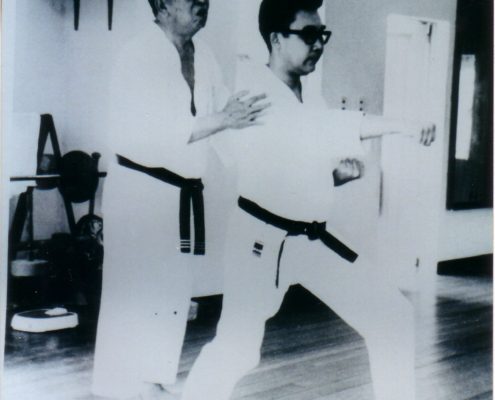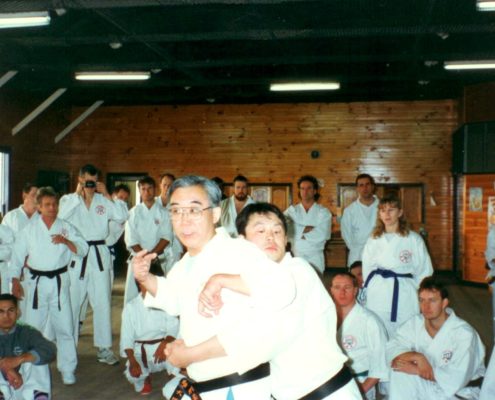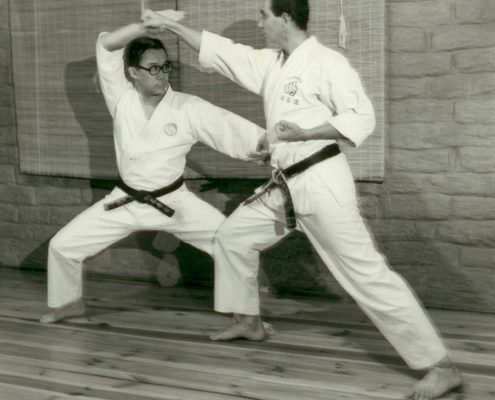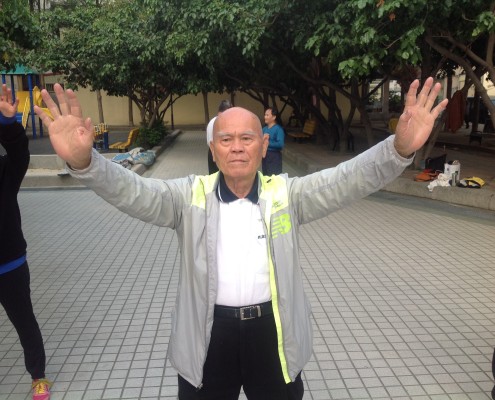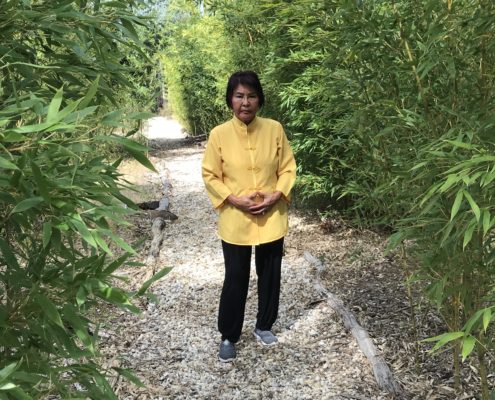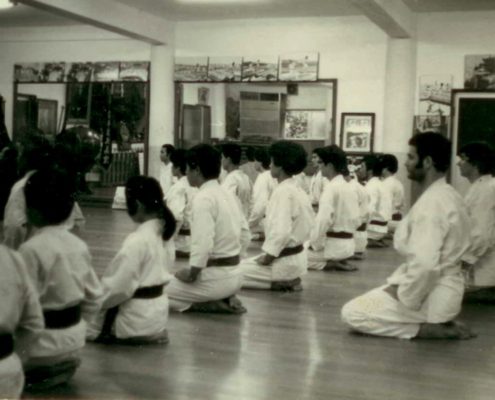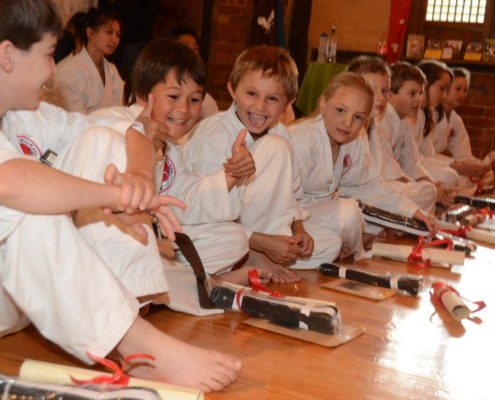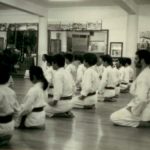Zen Meditation
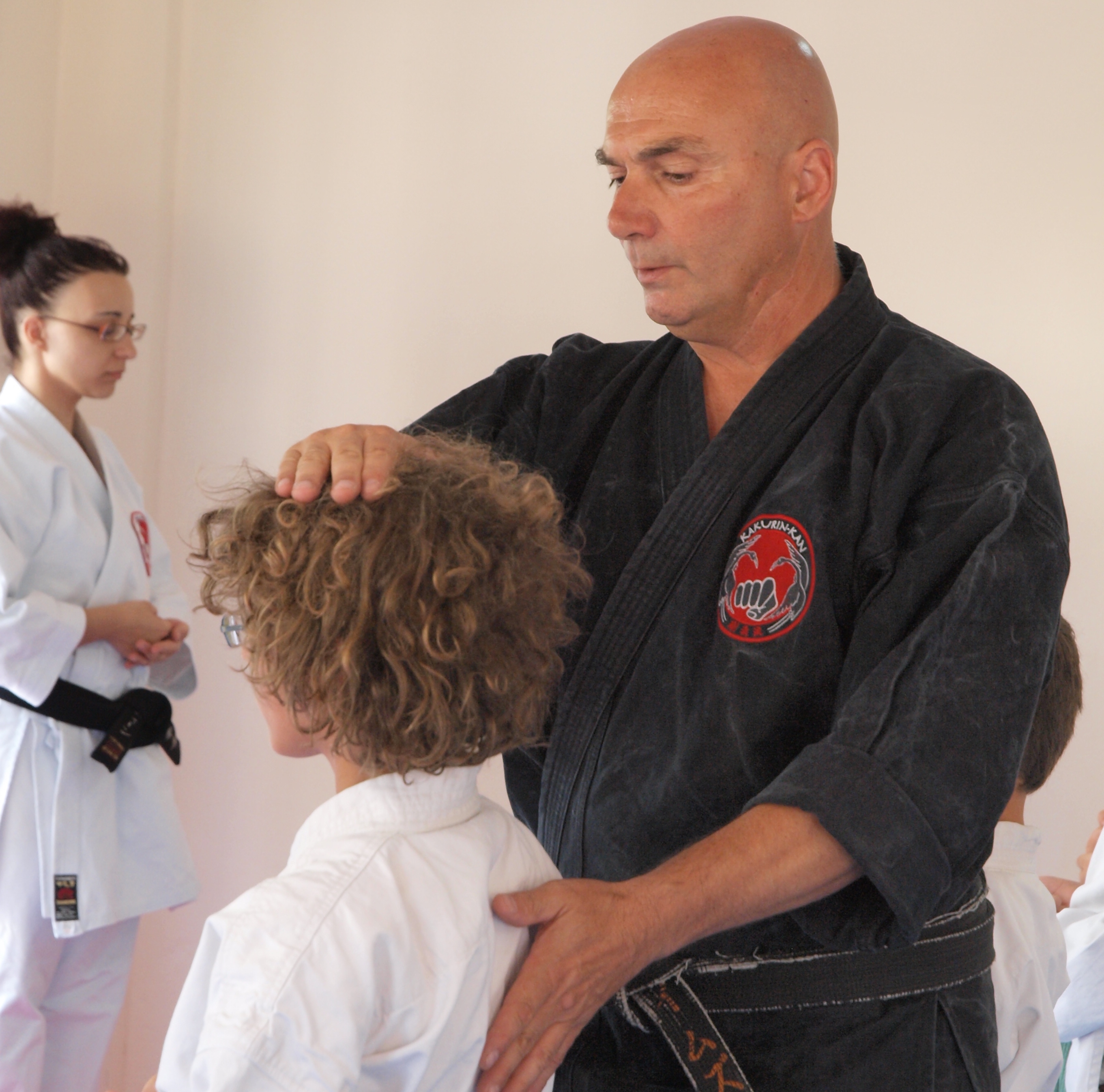
The significance of Zen in the Martial Arts defies definition because Zen has no theory, it is an inner knowing.
Zen meditation is the practice of refining your posture, breathing and awareness of each passing moment, enabling you to live fully in the present. As we grow up, we are not encouraged to free our minds to go wherever they choose. Instead, we are taught to control them.
There are many benefits to our personal health and wellbeing that can be found in Zen meditation. Peer-reviewed research has shown that meditation can improve hormonal balance within the body, promoting greater calmness, clarity and vitality.
We are always seeking harmony in our lives, in our relationships and the entirety of our existence. We tend to gravitate towards people that we resonate with and whose company we feel comfortable in. We try to avoid, wherever possible, situations that threaten us with disharmony. We also view the natural world as orderly and harmonious and strive to bring our personal lives into a similar state of balance and peace.
Our minds are conditioned by cultural and personal preferences to make decisions. Our ability to use speech and language as a form of communication is a close second to feelings. Human beings are vessels of feelings, physical sensations like temperature, touch and pressure and emotions such as anger, fear, sorrow and joy. With our feelings, we are able to relate to the world and ourselves in a viable way.
Our feelings when expressed are life affirming, it is our connection with our humanity and all of society around us.
Zazen Sitting Meditation
Sit comfortably, eyes slightly closed but looking straight ahead with 180 degree vision. Lengthen your spine and level your pelvis. Become aware of your breath; observe the sensation in your nostrils. Observe the hesitation occurring between one breath and the next.
Imagine that the inhalation is carrying the unifying, universal energy of heaven and earth into your body to fully experience the “vital self,” penetrating the bloodstream to nourish all the organs and cells.
As you exhale, contribute your own unique personal universal energy and love, nourishing and enriching the universe.
Allow your intention to remain with the breath, until you connect with the calm, silence deep within your center.
Sit with that stillness for a moment. If any thoughts arise, observe them and let them pass like clouds in the sky.
Remain in touch with the stillness, the silence.
Silence is not the complete absence of sound. Vibration and sound are always present in our lives. As we sit in meditation, we become so still that the vibrations and sounds of silence become audible. We begin to experience the sound of our breath through the nostrils, blood pumping in our body and the pulse of our heartbeat.
Posture and breathing must be correct in order for awareness to develop.
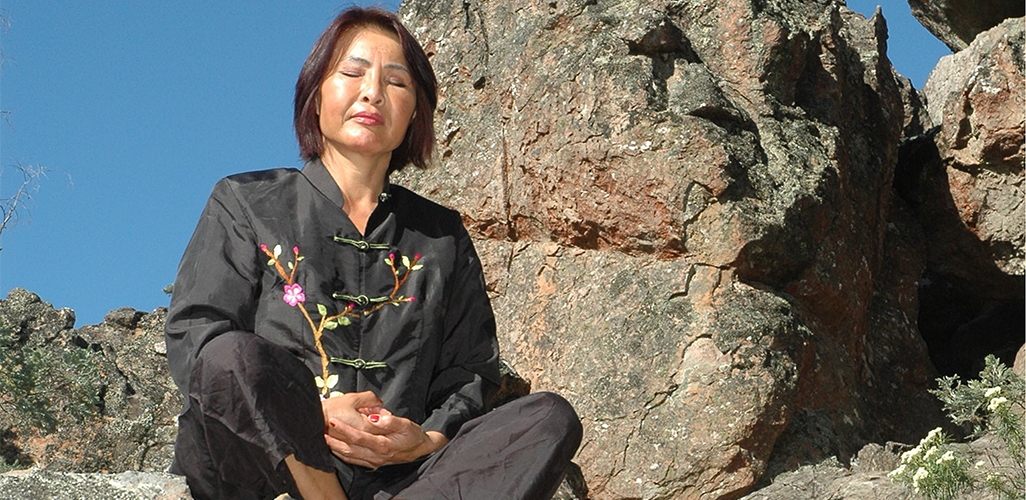
Kinhin Walking Meditation
Traditionally, Zen Walking is practiced between intervals of Sitting Meditation, to move and stretch the body without losing focus on the meditation. It is usually practiced outdoors in small groups but is ideally practiced individually. To begin, it is easier to practice in a quiet and peaceful environment, but with experience the setting becomes less important.
The mindset and breathing are the same as in Zazen Sitting Meditation, except instead of sitting you are performing the mundane action of walking slowly in a clockwise circle. Coordinate your inhalation with the lifting action of each step, and the exhalation with the placement of the foot.
Place your hands over your solar plexus, with the right on the outside for males and left on the outside for females. Your forearms should be almost parallel to the ground with shoulders and elbows dropped and relaxed. The feeling is as if you are surrendering to the earth.
Whilst walking, your eyes softly gaze slightly downwards, about 1.5 metres ahead. Do not fixate on anything but rather look at nothing in particular. This practice focuses on the feelings that you experience on the inside, rather than observing what is outside of you.
When walking, each step should be gradual and ease into establishing a connection with the ground. Slowly set down your heel, then the ball of the foot and lastly the toes. Your weight should shift slowly to the front foot as the rear heel begins to lift.
Walking slowly with proper structural alignment, when combined with mindful breathing, invites the body to become calm and relaxed.
To begin practicing Zazen or Kinhin Meditation, start with five minutes a day and gradually build the time up to an hour each day over a period of about six months.

Most people see Martial Arts as brutal contests between violent individuals focused on injuring each other, but this view neglects the role that Zen plays in these arts.
With the introduction of gunpowder and new ways of war in Japan, Samurais lost their prominence in society. As the demand for their skills as warriors diminished, the focus of their training began to shift away from ruthless violence towards a more spiritual approach. Around this time, Japanese fighting arts evolved to include the word “do” in their titles. Kenjitsu became Kendo and arts such as Ju-do, Aiki-do and Karate-do came to be.
The word “do” refers to a way or path is a means to develop good character. Ohtsuka Sensei described the importance of “Do” and Zen wonderfully in a letter he wrote to me in 1974. He emphasised that “Do” Arts train with the intent to cultivate an ability to discriminate genuine articles from falsehoods.
Some important principles in both Zen and Karate-do are the ideas of “Kime” and “Mushin.”
“Kime” literally translates to “to fixate.” In Karate practice, however, it means to totally immerse yourself single-mindedly in an action or technique. “Mushin” translates literally to “no mind,” meaning that your mind should be free from clutter and inessential thoughts.
These philosophies teach important life skills, particularly the ability to be mindful and present in moments of stress. They enable you to liberate your mind from fear and uncertainty in high-pressure situations such as combat.
A karate dojo is an arena of confined and controlled conflict, where your opponent is not someone trying to cause harm but help you understand yourself better in the way you respond to a challenging situation.
 Cart
Cart